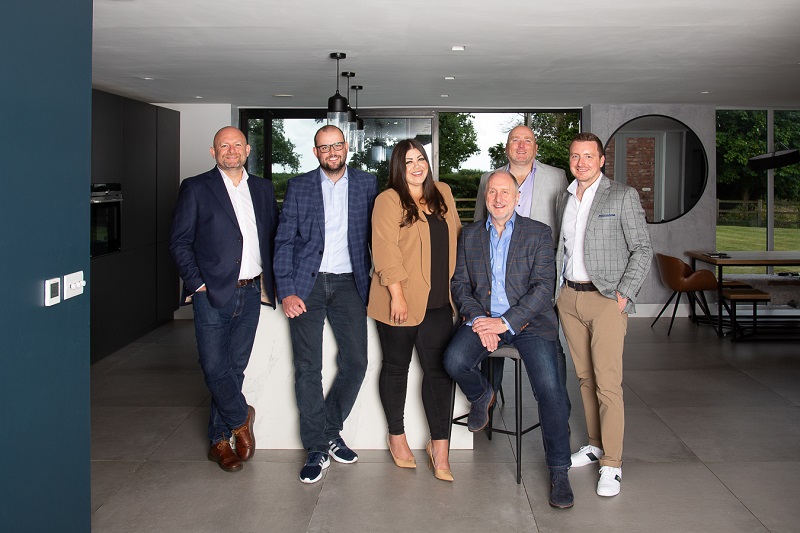As the equality conversation grows, terms such as diversity equity and inclusion (DE&I) are more widely used. Belonging, however, can seem a vague term for those that don’t understand it – and this is dangerous, says Dr Natalie Baumgartner, Chief Workforce Scientist at employee experience platform Achievers, who says belonging is diversity and inclusion done right.
Belonging – a ‘grey area’
“As humans, we all want to belong,” says Baumgartner, who adds that despite this natural emotional inclination, firms still fail to understand what it means for workplace equity. “It can be perceived that belonging is another word for inclusion, but we’ve identified it as being much bigger,” she says.
“While there’s a growing awareness of the term, there’s been a poverty of clarity around how it’s differentiated and managed,” she adds. Baumgartner, who leads the Achievers Workforce Institute, the firm’s scientific research arm, has released their 2021 Culture Report to help firms do just that.
The report is a seminal piece of work that found that workplace belonging has a clear correlation with lower levels of turnover, higher employee engagement, and more. However, they also found that women have a lower sense of belonging than men industry-wide.
Before Baumgartner gets into women and belonging, she first explains how it is tied to impostor syndrome, where her definition is feeling a fraud “even when external evidence indicates competence,” which affects women more due to societal engineering.
“It’s in the systemic ways that we raise women through education and work where the leadership behaviours that are most valued are often not those that are aligned with the general approach or wiring of women,” she says. “Being aggressive, louder, or interrupting others are attributes that are generally truer for men than women. So, when women aren’t displaying those behaviours, it exacerbates imposter syndrome because their voices don’t get heard.”
The five pillars of belonging
Through the research, Baumgartner discovered there are five pillars to workplace belonging, these are being known, welcomed, included, supported, and connected.
Shockingly, they found that women lagged behind men on every one of the five pillars, indicating that businesses need to do more to make women feel welcome, which in Baumgartner’s words goes beyond “showing someone where their desk is” and instead making sure they have the tools to make people feel “embraced in a meaningful way.”
She gives an example of when some women fail to feel known in the workplace, such as through their dual role as mothers and professionals where they “have historically struggled with being able to hold on to both of those identities” and have them seen as equally important.
She says the third pillar of belonging, namely feeling included, is about “truly bringing your whole self to work and feeling that you are valued and accepted without reservation.” The key to real inclusion, Baumgartner adds, is being in an accepting environment even if you’re a dissenting voice.
Improving belonging for women – key findings
In almost all diversity and inclusion discussions, we hear about the importance of both role models for diverse groups and diversifying leadership. In Achievers’ Culture Report, they found that diverse leadership teams actively contributed to a higher sense of workplace belonging. Baumgartner says she thinks that firms that prioritise diversity at senior levels show intention and dedication to the cause “that will likely filter down to other roles and the way the organisation does business.”
Another insightful finding was that women were 23% less likely than men to say their needs were being met by their company’s diversity and inclusion efforts which Baumgartner says means firms should ask their women what they need. “This is one of my big soapbox issues,” she says. “We want organisations to get talking to their people and specifically with this finding, asking women to help guide them with approaches moving forwards.”
Baumgartner says that when women are supported in the workplace, firms see improved work-life balance across the genders and better cross-organisational collaboration. She adds that this means allyship from men is crucial where Achievers has its own Women’s Network, an employee resource group that includes “an amazing team of male allies and leaders” and promotes female belonging as essential to the success of the entire business.
Another way for firms to boost belonging among staff is through recognition which Baumgartner says has some “very specific criteria.” Recognition should be frequent, at least once a month, and be meaningful instead of general, she adds.
She also says that through women-focused mentorship and sponsorship initiatives, organisations can prove they value women and their career progression which can have a “tremendous impact on the women themselves and will trickle down to the people beneath them.”
To encourage workplace belonging for women in the future, Baumgartner agrees that a combination of better policies, such as work flexibility for mothers, and learning new approaches to challenge exclusionary behaviours, is needed. “People need to be encouraged and feel supported and safe to call out these behaviours when they see them. So, if a man interrupts a woman at a meeting, it’s being able to say ‘thanks, John. Hey Emily, did you want to finish your thoughts’?”
To read the findings of the Achievers Workforce Institute’s 2021 Culture Report in full, click here.









